Porsche 2009 Annual Report Download - page 68
Download and view the complete annual report
Please find page 68 of the 2009 Porsche annual report below. You can navigate through the pages in the report by either clicking on the pages listed below, or by using the keyword search tool below to find specific information within the annual report.-
 1
1 -
 2
2 -
 3
3 -
 4
4 -
 5
5 -
 6
6 -
 7
7 -
 8
8 -
 9
9 -
 10
10 -
 11
11 -
 12
12 -
 13
13 -
 14
14 -
 15
15 -
 16
16 -
 17
17 -
 18
18 -
 19
19 -
 20
20 -
 21
21 -
 22
22 -
 23
23 -
 24
24 -
 25
25 -
 26
26 -
 27
27 -
 28
28 -
 29
29 -
 30
30 -
 31
31 -
 32
32 -
 33
33 -
 34
34 -
 35
35 -
 36
36 -
 37
37 -
 38
38 -
 39
39 -
 40
40 -
 41
41 -
 42
42 -
 43
43 -
 44
44 -
 45
45 -
 46
46 -
 47
47 -
 48
48 -
 49
49 -
 50
50 -
 51
51 -
 52
52 -
 53
53 -
 54
54 -
 55
55 -
 56
56 -
 57
57 -
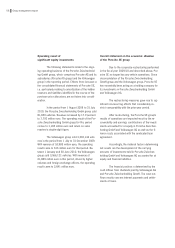 58
58 -
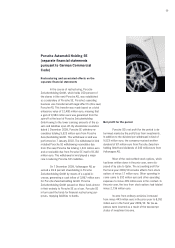 59
59 -
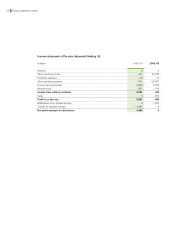 60
60 -
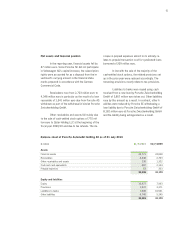 61
61 -
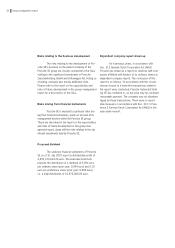 62
62 -
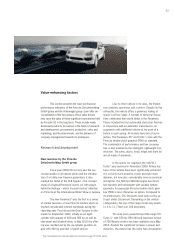 63
63 -
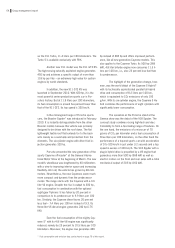 64
64 -
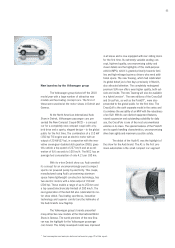 65
65 -
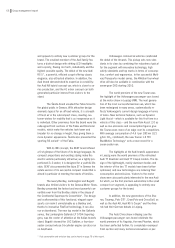 66
66 -
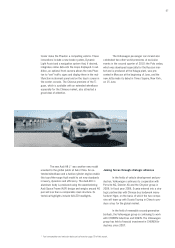 67
67 -
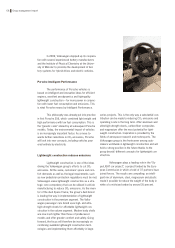 68
68 -
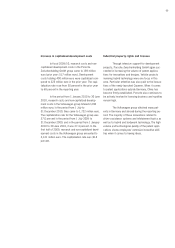 69
69 -
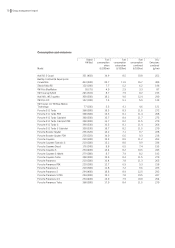 70
70 -
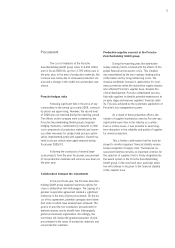 71
71 -
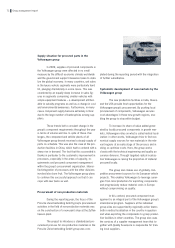 72
72 -
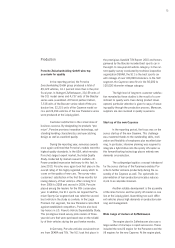 73
73 -
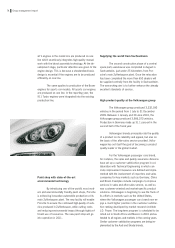 74
74 -
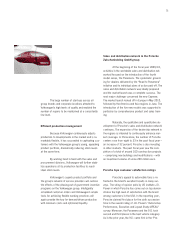 75
75 -
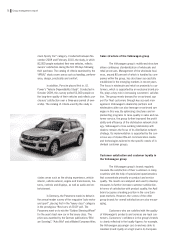 76
76 -
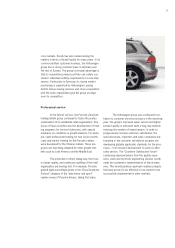 77
77 -
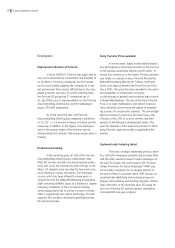 78
78 -
 79
79 -
 80
80 -
 81
81 -
 82
82 -
 83
83 -
 84
84 -
 85
85 -
 86
86 -
 87
87 -
 88
88 -
 89
89 -
 90
90 -
 91
91 -
 92
92 -
 93
93 -
 94
94 -
 95
95 -
 96
96 -
 97
97 -
 98
98 -
 99
99 -
 100
100 -
 101
101 -
 102
102 -
 103
103 -
 104
104 -
 105
105 -
 106
106 -
 107
107 -
 108
108 -
 109
109 -
 110
110 -
 111
111 -
 112
112 -
 113
113 -
 114
114 -
 115
115 -
 116
116 -
 117
117 -
 118
118 -
 119
119 -
 120
120 -
 121
121 -
 122
122 -
 123
123 -
 124
124 -
 125
125 -
 126
126 -
 127
127 -
 128
128 -
 129
129 -
 130
130 -
 131
131 -
 132
132 -
 133
133 -
 134
134 -
 135
135 -
 136
136 -
 137
137 -
 138
138 -
 139
139 -
 140
140 -
 141
141 -
 142
142 -
 143
143 -
 144
144 -
 145
145 -
 146
146 -
 147
147 -
 148
148 -
 149
149 -
 150
150 -
 151
151 -
 152
152 -
 153
153 -
 154
154 -
 155
155 -
 156
156 -
 157
157 -
 158
158 -
 159
159 -
 160
160 -
 161
161 -
 162
162 -
 163
163 -
 164
164 -
 165
165 -
 166
166 -
 167
167 -
 168
168 -
 169
169 -
 170
170 -
 171
171 -
 172
172 -
 173
173 -
 174
174 -
 175
175 -
 176
176 -
 177
177 -
 178
178 -
 179
179 -
 180
180 -
 181
181 -
 182
182 -
 183
183 -
 184
184 -
 185
185 -
 186
186 -
 187
187 -
 188
188 -
 189
189 -
 190
190 -
 191
191 -
 192
192 -
 193
193 -
 194
194 -
 195
195 -
 196
196 -
 197
197 -
 198
198 -
 199
199 -
 200
200 -
 201
201 -
 202
202 -
 203
203 -
 204
204 -
 205
205 -
 206
206 -
 207
207 -
 208
208 -
 209
209 -
 210
210 -
 211
211 -
 212
212 -
 213
213 -
 214
214 -
 215
215 -
 216
216 -
 217
217 -
 218
218 -
 219
219 -
 220
220 -
 221
221 -
 222
222 -
 223
223 -
 224
224 -
 225
225 -
 226
226 -
 227
227 -
 228
228 -
 229
229 -
 230
230 -
 231
231 -
 232
232 -
 233
233 -
 234
234 -
 235
235 -
 236
236 -
 237
237 -
 238
238 -
 239
239 -
 240
240 -
 241
241 -
 242
242 -
 243
243 -
 244
244 -
 245
245 -
 246
246 -
 247
247 -
 248
248 -
 249
249 -
 250
250 -
 251
251 -
 252
252 -
 253
253 -
 254
254 -
 255
255 -
 256
256 -
 257
257 -
 258
258 -
 259
259 -
 260
260 -
 261
261 -
 262
262 -
 263
263 -
 264
264 -
 265
265 -
 266
266 -
 267
267 -
 268
268 -
 269
269 -
 270
270 -
 271
271 -
 272
272 -
 273
273 -
 274
274 -
 275
275
 |
 |

series projects. This is the only way a substantial con-
tribution can be made to reducing CO2 emissions and
operating costs in the long term. After aluminum and
ultra-high-strength steels, carbon-fiber composites
and magnesium offer the most potential for light-
weight construction. Inspiration is provided by the
fields of aerospace research and motorsports. The
Volkswagen group is the frontrunner among auto-
makers worldwide in lightweight construction and will
hold a strong position in the future thanks to the
group brands’ different concepts for lightweight con-
struction.
Volkswagen plays a leading role in the “Su-
perLIGHT car project”, a project funded by the Euro-
pean Commission in which a total of 37 partners have
joined forces. The results are compelling: an intelli-
gent mix of aluminum, steel, magnesium and plastic
made it possible to reduce the weight of the body in
white of a mid-sized sedan by around 35 percent.
In 2009, Volkswagen stepped up its coopera-
tion with several experienced battery manufacturers
and the Institute of Physical Chemistry at the Univer-
sity of Münster to promote the development of bat-
tery systems for hybrid drives and electric vehicles.
Porsche Intelligent Performance
The performance of Porsche vehicles is
based on intelligent and innovative ideas for efficient
engines, excellent aerodynamics and high-quality
lightweight construction – for more power in conjunc-
tion with lower fuel consumption and emissions. This
is what Porsche means by Intelligent Performance.
This philosophy was already put into practice
in first Porsche 356, which combined light weight and
high performance with low fuel consumption. This is
the “genetic code” shared by all subsequent Porsche
models. Today, the environmental impact of vehicles
is an increasingly important factor. As a move to-
wards further reductions in CO2 emissions, Porsche
will look into new concepts, including vehicles pow-
ered entirely by electricity.
Lightweight construction reduces emissions
Lightweight construction is one of the ideas
driving the Volkswagen group’s efforts to cut CO2
emissions. All the same, customers’ space and com-
fort demands as well as the legal requirements such
as new pedestrian protection regulations must be met.
Volkswagen views lightweight construction as a stra-
tegic core competency that can be utilized in vehicle
manufacturing to reduce CO2 emissions. As the inven-
tor of the Audi Space Frame, the group’s Audi brand
is leading the way in implementation of lightweight
construction in the premium segment. The Volks-
wagen passenger cars brand uses high- and ultra-
high-strength steels for affordable lightweight con-
struction in the volume segment. Modern body shells
are now much lighter than those of predecessor
models and offer greater comfort and safety. Going
forward, the focus will therefore be increasingly on
combining available lightweight construction tech-
nologies and implementing them affordably in large-
68 Group management report
